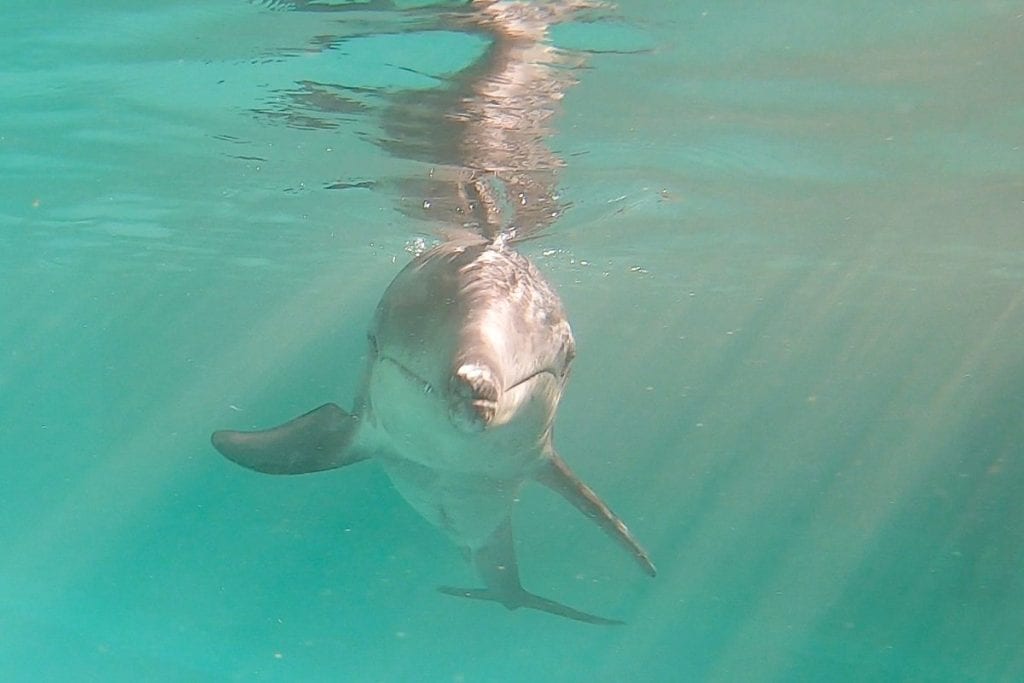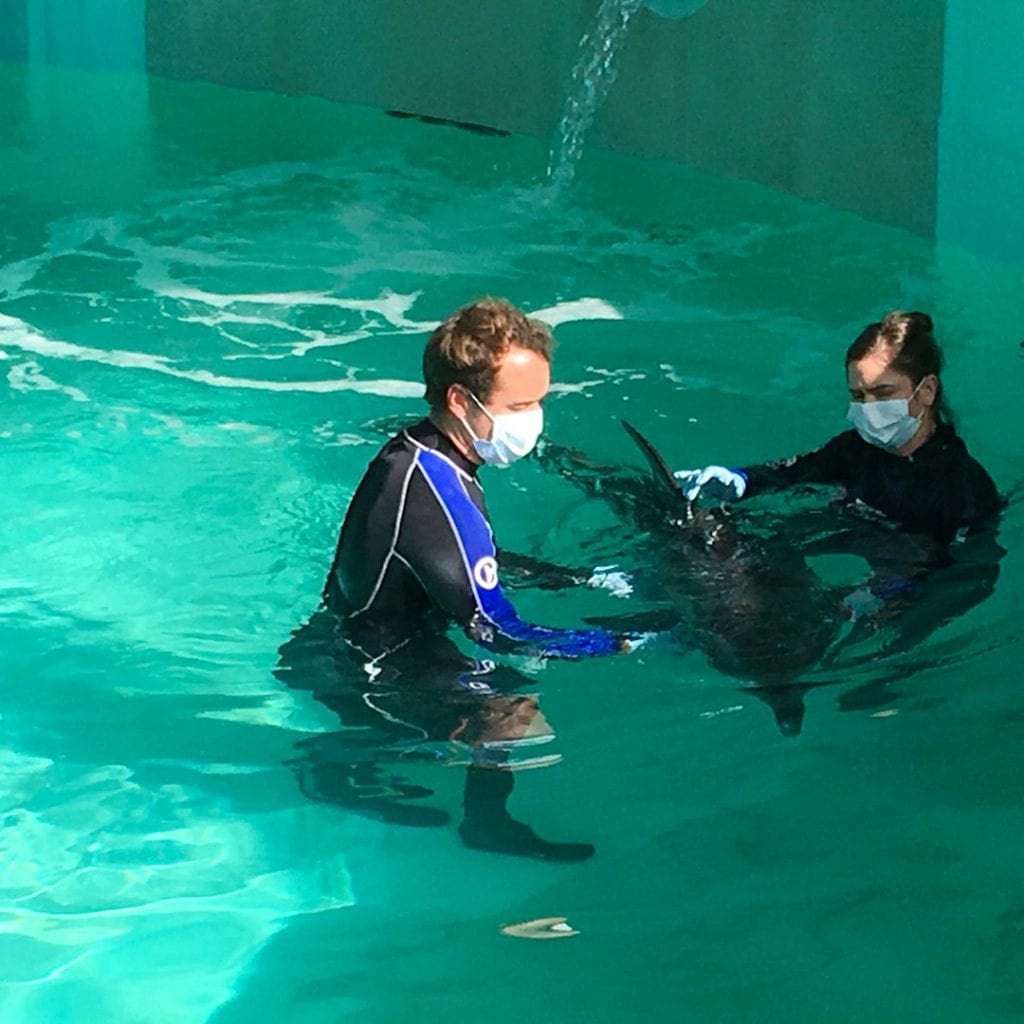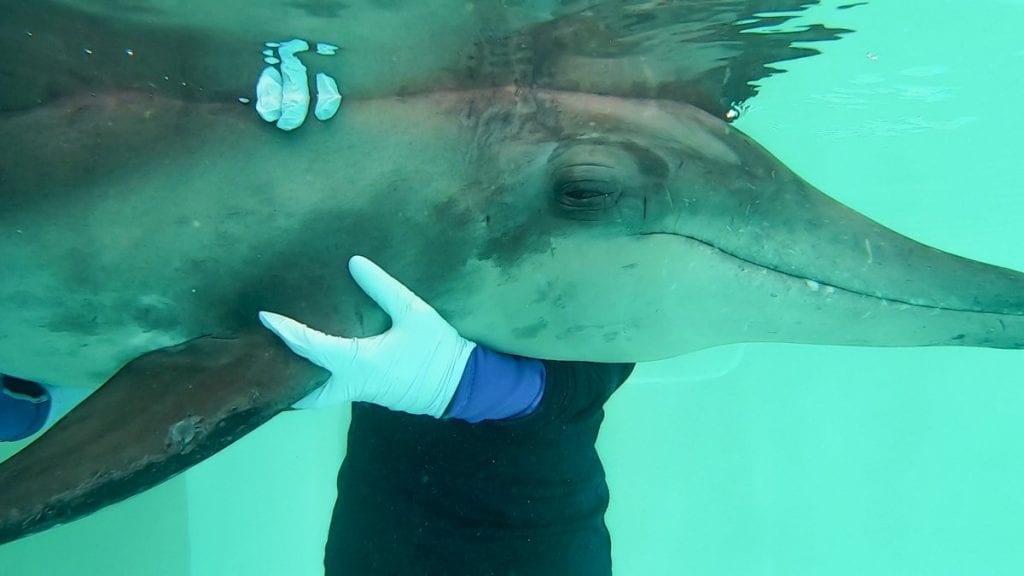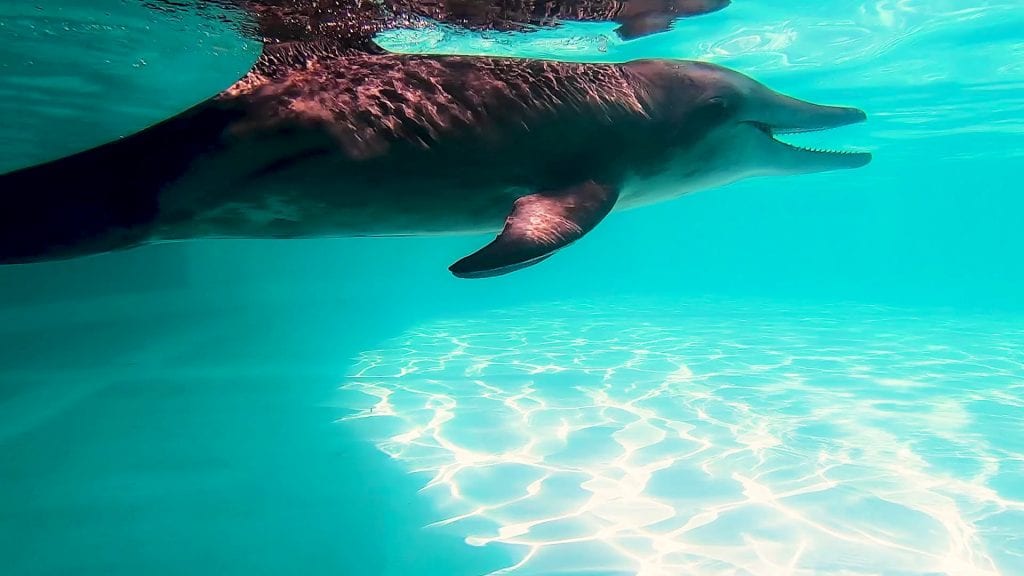Rescued dolphin, nicknamed Rudolph, receiving medical care at Clearwater Marine Aquarium facility
One of an estimated 600 of its species in the Gulf of Mexico, Rudolph, a rough-toothed dolphin, is being rehabilitated at Clearwater Marine Aquarium’s Fred Howard Park location after the animal was found beached off Sanibel Island earlier in the week.

“The animal is alert and responsive, which is encouraging as Rudolph was in critical condition when he was rescued” said veterinarian Dr. Shelly Marquardt with Clearwater Marine Aquarium. “We continue to run diagnostics to monitor Rudolph’s condition and attempt to determine the cause of his stranding. While still severely compromised, his progression is encouraging.”

Beached dolphin rescued and transported to stranding station in Fred Howard Park
On Monday, December 16, 2019, at 7:00 a.m., Clearwater Marine Aquarium received a report from NOAA that the Florida Fish and Wildlife Conservation Commission was responding to a young rough-toothed dolphin that beached in Sanibel Island. FWC assessed the animal’s health and transported the animal to CMA for rehabilitation at its Fred Howard Park marine mammal stranding station. This is the same location where 2 rescued pilot whales received care before being released earlier this year.
“The Clearwater Marine Aquarium team is providing Rudolph the best medical care possible, around the clock,” said CEO David Yates. “The goal of our efforts are to return Rudolph back home in the wild, but quite a bit of work still needs to be done to accomplish this goal.”

Rough-toothed dolphins — a small but remarkable species
Rudolph, as Clearwater Marine Aquarium has nicknamed him, is a male juvenile rough-toothed dolphin (Steno bredanensis) weighing 153 lbs. upon intake and measuring just over 6.5 feet (201 cm). According to NOAA Fisheries, this species can reach up to 8.5 feet in length, relatively small compared to other dolphin species, they weigh about 350 lbs. and have a lifespan of 36 years.
Rough-toothed dolphins are usually found in tight-knit groups of 10 to 20 individuals but have been reported in groups of up to 100 individuals. They often associate with other cetacean species, including short-finned pilot whales, bottlenose dolphins, pantropical spotted dolphins, and spinner dolphins.
Follow our Facebook page for more updates.

More About Rough-Toothed Dolphins
Where are rough-toothed dolphins found?
This species of dolphin can be found in deep warm and tropical waters around the world.
Are they endangered?
The rough-toothed dolphin species is not listed as endangered and has an IUCN classification of “least concern,” but like all marine mammals in the U.S. they are protected under the Marine Mammal Protection Act. The worldwide population of these dolphins is unknown, but NOAA Fisheries estimates there are about 600 dolphins in the northern Gulf of Mexico and a total of 6,900 in U.S. waters, with 6,000 of them around Hawaii.
What do they eat?
Rough-toothed dolphins eat squid and different kinds of fish in the wild.
Is this species related to Atlantic bottlenose dolphins?
Yes! They are both in the Delphinidae family. Rough-toothed dolphins have also been known to socialize with other species, including bottlenose dolphins.
Are they social animals?
Rough-toothed dolphins are usually found in tight-knit groups of 10 to 20 individuals but have been reported in groups of up to 100 individuals. They often associate with other cetacean species, including short-finned pilot whales, bottlenose dolphins, pantropical spotted dolphins, and spinner dolphins. Rehabbing the dolphin alone is best for its health and the health of other animals to ensure effective and appropriate treatment.
Rescue activities conducted under the authority of Section 109h of the Marine Mammal Protection Act. Financial support for rescue efforts provided by National Fish and Wildlife Foundation.